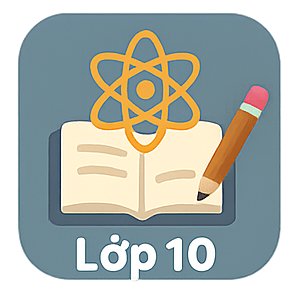Giáo án tiếng Anh lớp 10 Tuần 5 sách mới
Giáo án tiếng Anh lớp 10 chương trình mới Tuần 5
Giáo án lớp 10 môn Tiếng Anh sách mới Tuần 5 dưới đây nằm trong tài liệu Giáo án môn Tiếng Anh 10 theo tuần do VnDoc.com sưu tầm và đăng tải. Nội dung giáo án được biên soạn kỹ lưỡng giúp quý thầy cô soạn bài nhanh và hiệu quả hơn.
PERIOD: 13 UNIT 2: YOUR BODY AND YOU
Date of planning: LISTENING - The Food Pyramid
Date of teaching:
I. AIMS/OBJECTIVES OF THE LESSON
1. Language focus
- To provide learners some vocabulary related to food pyramid and a healthy diet
2. Skills
- To promote Ss to develop their listening skills
- To help Ss develop the skill of working in pairs and groups
3. Attitudes
- To encourage Ss to work harder
- To provide Ss some motivation
II. PREPARATION
1. Teacher
- Teaching aids: textbook, lesson plan
- Teaching method: Communicative language teaching
2. Students
- Read through English Unit 2 - Listening at home
III. PROCEDURE
1. Class organization (1 minute)
2. Check up (5 minutes)
- Ask some pairs of Ss to talk about good and bad habits
3. New lesson (35 minutes)
|
TEACHER'S ACTIVITIES |
STUDENTS' ACTIVITIES |
||||
|
Lead in Let Ss make a list of food and drink that are good and bad for us |
Do as appointed
|
||||
|
1. What do you usually have for lunch and dinner? Do you care about the nutritional value of the things you eat? Ask Ss to work in pairs, discuss and answer the questions |
Do as appointed I often have rice, meat, and sugary drink I rarely have vegetable and fruit juice for my lunch and dinner We know little about the nutritional value of the things we eat |
||||
|
2. Look at the picture below. What do you think the listening is about? Now listen Let Ss work in groups and describe the food pyramid
Play the tape twice |
Do as appointed Look at the food pyramid we can see that in order to control our weight, we should not only have a healthy diet but also do regular exercise. As can be seen from the food pyramid, we should eat more foot from the bottom part of the pyramid (vegetable, fruit, whole grains) and fewer from the top (red meat, refined grains, potatoes, sugary drink and salt) |
||||
|
3. Listen again and decide whether the statements are T or F Let Ss work in pairs to do this task
|
Do as appointed 1. F - simple 2. T 3. F - fewer/ at the bottom 4. T 5. F - a quarter of |
||||
|
4. Listen again divide the plate into sections and label which food should be in each section Ask Ss to work in groups and do this task |
- Do as appointed Vegetable (varied)
whole fish, nut grains poultry, beans |
4. Consolidation(3 mins)
- Vocabulary related to food pyramid and a healthy diet
- Listening skills
5. Homework: (1 min)
- Vocabulary related to the topic of family life - changing roles
- Vocabulary related to food pyramid and a healthy diet
- Listening skills
- Do the task again
- Read Unit 2 - Writing at home
PERIOD: 14 UNIT 2: YOUR BODY AND YOU
Date of planning: WRITING
Date of teaching:
I. AIMS/OBJECTIVES OF THE LESSON
1. Language focus
- To provide learners some vocabulary related to healthy foods and drinks
- To instruct Ss different expression of thanks, asking for and giving advice
2. Skills
- To promote Ss to develop their writing skills
- To help Ss develop the skill of working in pairs and groups
3. Attitudes
- To encourage Ss to work harder
- To provide Ss some motivation
II. PREPARATION
1. Teacher
- Teaching aids: textbook, lesson plan
- Teaching method: Communicative language teaching
2. Students
- Read through English Unit 2 - Writing at home
III. PROCEDURE
1. Class organization (1 minute)
2. Check up (5 minutes)
- Ask some pairs of Ss to talk about different sections of a healthy dinner plate
3. New lesson (35 minutes)
|
TEACHER'S ACTIVITIES |
STUDENTS' ACTIVITIES |
|
1. Build a list of food from your own experience Ask Ss to do the task |
- Do as appointed
|
|
2. Read the fact below. Do you have some of these foods on your list? Ask Ss to do read the text |
- Read the text and note down new words - allergies: shellfish, mussel, shrimp, crab, seafood, milk, wheat, soya, peanuts - bad breath: garlic, onion, fish, curry, alcohol, cabbage - stress: caffeine-containing food: coffee, cola, chocolate tea, alcoholic drink, refined sugar, white flour, salt, saturated fats, processed food, junk food, fast food containing synthetic additives - sleeplessness: caffeine containing coffee, cocoa, strong tea, coffee, alcohol, fatty/spicy food, (MSG (monosodium glutamate), artificial colours, flavourings) - sleepiness: dairy product, cottage cheese, milk, soy product: soy milk, tofu, honey, almonds, banana, poultry, whole grains, beans, rice, avocado, sesame, flaxseed, papayas |
|
3. Write inquiries for advice on the diet Ask Ss to work in groups and do the task |
Dear expert, I have been an expectant woman for two months and I really wonder which foods are good and which are not good for me and my baby. I would be very grateful/thankful if you could give me some information about this. Thank you Linda Dear expert, I have just had my appendix out/ appendicitis operation last week/ and I was wondering if you could advise me what to eat and not to eat so that I can recover quickly. Many thanks Peter
Dear expert, I am going to have my stomach operation next week and I know that what I eat may have some effect on my recovery after the operation. Could you give me some advice on this. Thank a lot James |
|
4. You are the food specialist, give advice Ask Ss to work in groups to do this task
Ask Ss to exchange their writing for peer comment |
Do as appointed Dear Linda, Pregnancy is a very important and sensitive period on which foods and drinks have great influences. They provide nutrition and necessary substances for the development of the baby. You are advised to eat whole grains with fish, beef, poultry or red meat which make up half of your plate in your major meals. They will provide you and your baby enough amount of protein. For the other half of the plate, you should eat vegetables and fruits which are rich in vitamins and fibres. Besides, you drink about 2 litters of water, or fruit juice per day. This ensures that you and your baby are well hydrated. Three glasses of milk each days will provide you and your baby with carbohydrate and micro-substance You shouldn't smoke during you pregnancy in case your baby may be defected or mentally retarded. You shouldn't drink caffeine containing and alcoholic drink. |
4. Consolidation(3 mins)
- Vocabulary related to the topic of sharing household chores
- Writing skills
5. Homework: (1 min)
- Vocabulary related to the topic of sharing household chores
- Writing skills
- Do the task again
- Read Unit 1 - Communication and Culture at home
PERIOD: 15 UNIT 2: YOUR BODY AND YOU
Date of planning: COMMUNICATION AND CULTURE
Date of teaching:
I. AIMS/ OBJECTIVES OF THE LESSON
1. Language focus
- To provide learners some communication samples and cultural items
2. Skills
- To promote Ss to develop their communication skills and cultural understanding
- To help Ss develop the skill of working in pairs and groups
3. Attitudes
- To encourage Ss to work harder
- To provide Ss some motivation
II. PREPARATION
1. Teacher
- Teaching aids: textbook, lesson plan
- Teaching method: Communicative language teaching
2. Students
- Read through English Unit 2 - Communication and Culture at home
III. PROCEDURE
1. Class organization (1 minute)
2. Check up (5 minutes)
- Ask some Ss to go to the board and read their writings
3. New lesson (40 minutes)
|
TEACHER'S ACTIVITIES |
STUDENTS' ACTIVITIES |
|
Communication Discussion - who does what in your family? 1. Look at the pictures. Which parts of the body does each activity benefit? Ask Ss to work in groups and do the task
2. In pairs or groups, discuss why these activities are healthy Ask Ss to read the statements
Play the recording. Ss listen and do the task
3. Work in groups. Choose a system of the body and make a list of all activities that are good for it |
- Do as appointed Picture 1, 2, 3: People are doing physical exercise. Picture 4: People are swimming and diving. These activities benefit various parts of our body. They are good for skeletal system, circulatory system respiratory system, nervous system and digestive system.
- Do as appointed They stimulate our bones, joints and muscles and us to reduce pressure and tiredness (skeletal system) , cause the blood to circulate better (circulatory system), help us to control our breath (respiratory system), make us feel comfortable and relieved so that we can think reasonably(nervous system), help us to break down/digest the food quickly, burn calories (digestive system).
- Do as appointed |
|
Culture 1. Read about the health beliefs and practices in two different countries. - Ask Ss to do the task
2. Discuss the similarities and differences in health beliefs and practices between the two countries
3. Do you know any traditional therapy (treatment without medicine)? Share the basic ideas Ask Ss to work in groups, talk about acupuncture |
- Two students read out the texts - take note new words balance >< imbalance Herbal medicines indigenous/local folk practices cost-effective
- Do as appointed Vietnamese and Indonesian people have both similarities and differences in their health beliefs and practices. For the similarity, that is the use of herbal and traditional medicines to treat the ill. In these both countries, traditional treatments, and herbs are considered to be safe, effective and affordable. For the differences, Vietnamese people consider the imbalance of yin and yang as the cause of sicknesses while Indonesian people believe that illnesses are caused either naturally or personally. That is the reason why folk medicine Vietnamese practicers try to restore the yin/yang balance whereas Indonesian ones pay attention to restoring normal, proper and comfortable condition.
- Work in groups, talk about acupuncture. |
4. Consolidation(3 mins)
- Discuss the similarities and differences in health beliefs and practices between two countries
5. Homework: (1 min)
- Discussion the change in women's and men's roles
- Discuss the similarities and differences in health beliefs and practices between two countries
- Do the task again
- Read Unit 2 - Looking back and Project at home
Trên đây là giáo án tuần 5 môn tiếng Anh lớp 10 mới.
Xem thêm giáo án tiếng Anh 10 cả năm tại: Giáo án tiếng Anh lớp 10 mới thí điểm trọn bộ năm học 2019 - 2020. Mời bạn đọc tham khảo thêm nhiều tài liệu ôn tập Tiếng Anh 10 cả năm khác như: Để học tốt Tiếng Anh lớp 10, Đề thi học kì 1 lớp 10, Đề thi học kì 2 lớp 10, Bài tập Tiếng Anh lớp 10 theo từng Unit trực tuyến,.... được cập nhật liên tục trên VnDoc.com.





